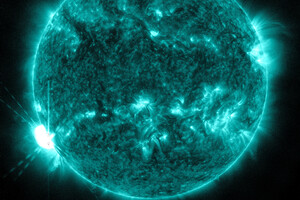Interruptions to the Atlantic Ocean and Europe were observed for more than an hour.

On Tuesday, May 3, the Sun occurred powerful flash of class X 1.1. According to Space weather, the source of the flash was a spot on our star, which appeared on the southeastern edge of the Sun.
Radiation released by the flash ionized the Earth's atmosphere. As a result, there were problems with radio communication over the Atlantic Ocean and Europe. Signals below 30 MHz faded for more than an hour.
Read also: Magnetic storms in May: what days can be dangerous
It is noted that the sunspot responsible for the outbreak, scientists have observed less than a day . It has released nine flares: six C-Class, two M-Class and one X-Class. It is expected to affect the Earth more and more as it turns to our planet. regions in which the Sun's magnetic fields are much stronger than in the surrounding regions. These magnetic forces block the flow of hot gas from the Sun's interior, making sunspots much colder than the surrounding areas. Solar flares occur when magnetic field lines near sunspots are dramatically reorganized.
Sometimes these radiation emissions also cause coronal mass emissions, which are solar plasma explosions.
Recall There was a double flare in the Sun on April 25 . It led to a short-term disconnection of radio communications over Asia and Australia.




